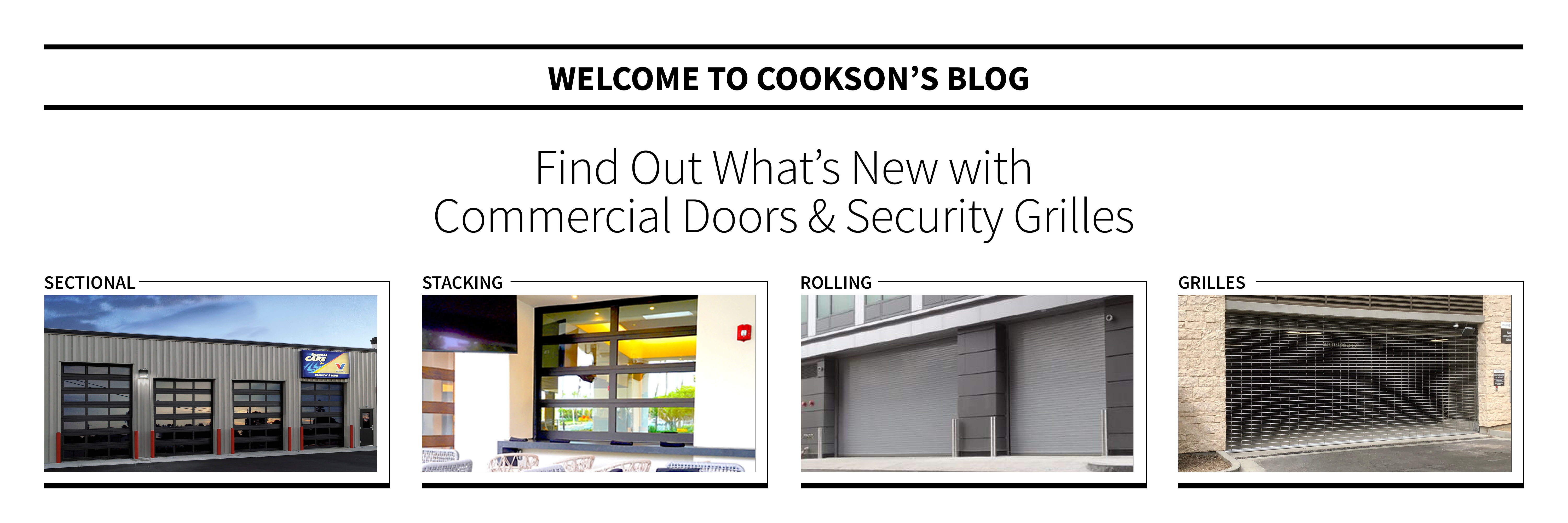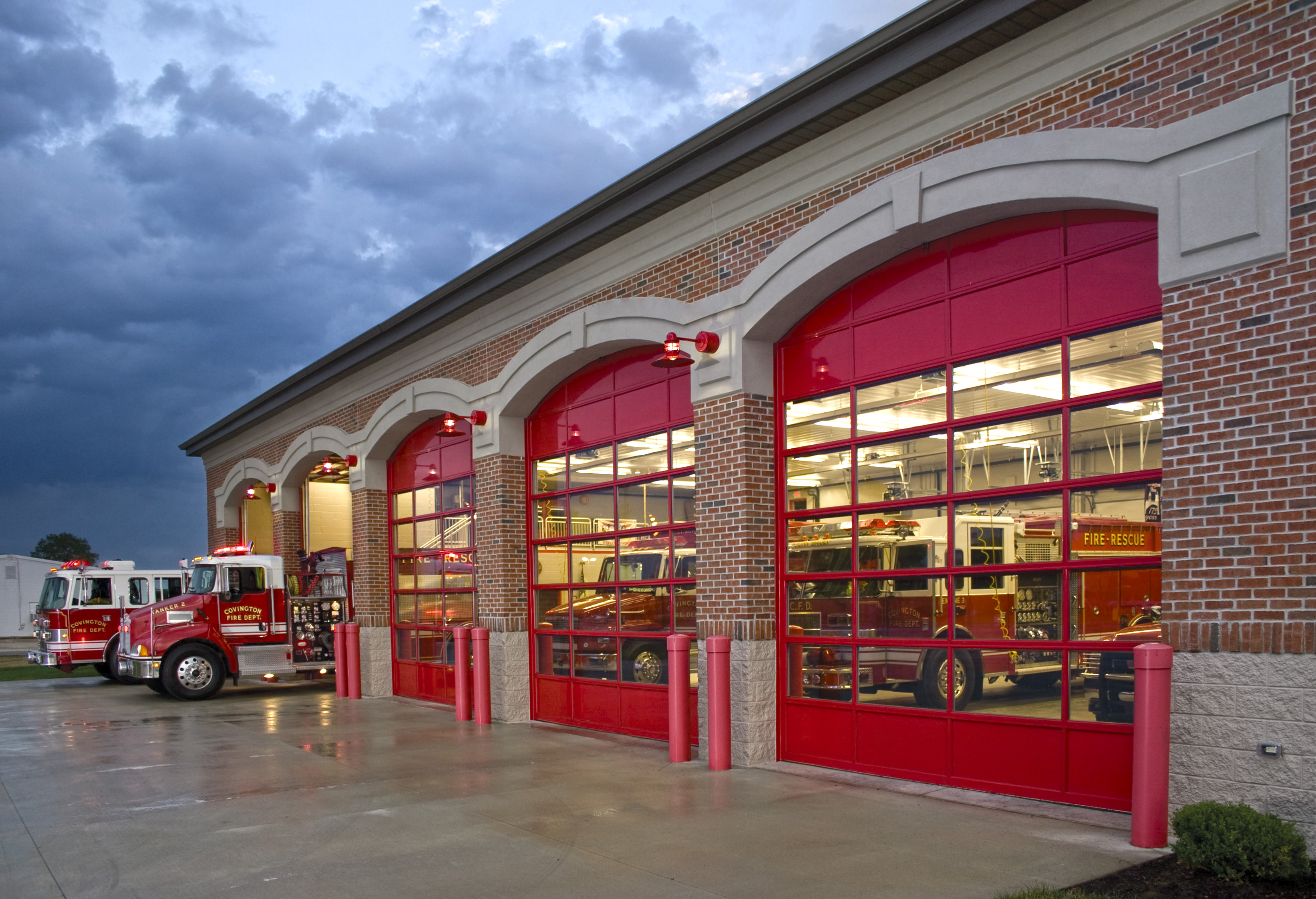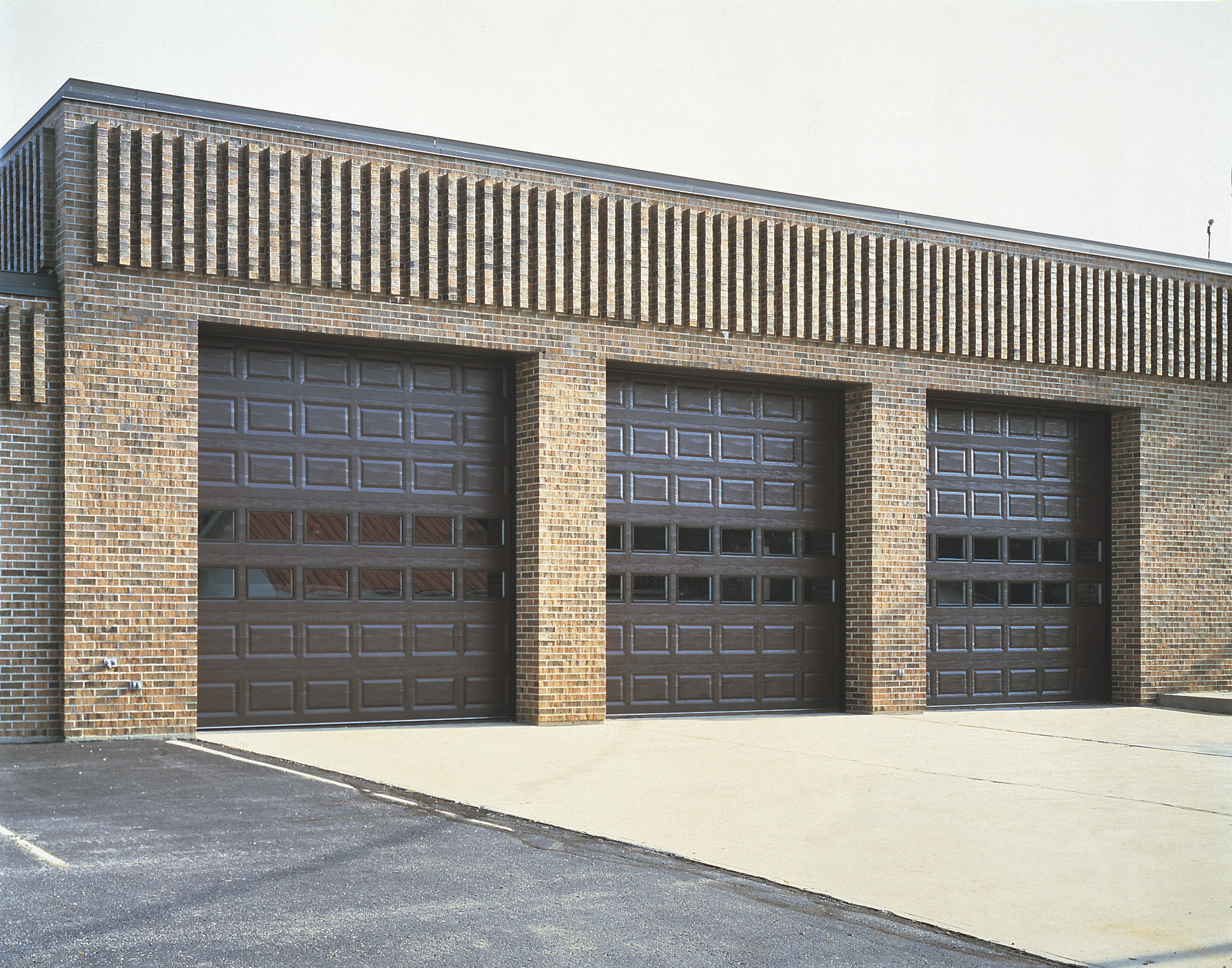

Cookson Blog
Welcome to the Cookson Blog! - Roll Up Door and Security Grille news - What's New?
SUBSCRIBE
Get updates on new blog posts to your inbox!
Choosing Between Rolling vs Sectional Doors | Cookson Door
Whether you are building a new structure or renovating an existing one, each entryway in a building must have a closure that meets the needs of your specific application. When an installation requires a commercial overhead door, there are two main types to choose from — rolling doors or sectional doors. One is not better than the other, as each has unique advantages that enable them to excel when installed into the proper setting.
Factors to consider when selecting your overhead door
Having high-quality commercial overhead doors at your business is essential for maintaining productivity and traffic flow. Incorporating doors practically into your design depends on your operational requirements and how you will use the door.
Here are several important factors to consider.
Performance

One thing you should always question when deciding on a closure is how much traffic will be coming through it. Although not all rolling doors are made for heavy traffic, there are high-performance rolling doors that are designed for high-cycle applications, with some models delivering up to 1 million cycles. While sectional doors don't include this high-cycle option, many manufacturers offer specially designed springs that allow their sectional doors to cycle up to 100,000 times. When choosing where to install a rolling door, remember that more is not always better if extra cycles are unnecessary.
Mounting
.jpg?sfvrsn=1f3b246d_2)
Rolling and sectional commercial doors are mounted differently. Because rolling doors require headroom above the doorway to coil into the shaft, they can be mounted on the face of a wall or between jambs. This application is best if you have little headroom and do not want to restrict access.
A sectional door can be mounted in many ways, including standard, high-lift, full-vertical-lift, or low-headroom tracks. The space and location requirements will differ based on the chosen style. For example, a vertical-lift sectional door will require the most headroom, and a low-headroom sectional door will need the most backroom. Various mounting styles allow for flexibility when installing a sectional door.
Installation and Maintenance

Installation is a one-time event, while maintenance is an ongoing commitment. Because they have fewer parts, rolling doors seem straightforward when it comes to installation. However, because of their size and weight, you might need specialized lifting equipment to complete the installation.
Since there are fewer movable exposed parts on rolling doors, they require less maintenance. Still, both doors require routine checks.
Size

Although rolling and sectional doors can be customized to fit your opening, rolling doors can be built to fit larger sizes. Sectional doors are only available in predetermined increments while rolling doors can be customized to the exact dimensions that you need. Steel sectional doors are available in 2-inch width increments and 3-inch height increments. Aluminum sectional doors are available in 1-inch increments in either direction.
The slats — or sections — for each kind of door are quite different. A rolling door consists of slats commonly 2 5/8 inches high, with some models using slats 1 ½ inches high. Sectional doors can contain sections either 18, 21, or 24 inches high. Both variations of doors will create an aesthetically pleasing appearance.
Material, Gauge, and Finish
Although gauge, material, and finish vary based on the manufacturer, rolling doors typically come in steel, stainless steel, or aluminum options. Sectional doors are most commonly available in steel 99% of the time but can also come in aluminum.
Each door type has various gauges that can be used, but rolling doors are usually manufactured in a heavier gauge than sectional doors.
Rolling doors take the cake for the numerous options of available finishes, but sectional doors have a secret. Rolling doors are available in powder-coated steel, stainless steel, aluminum mill, clear aluminum, colored aluminum, powder coat, and hot-dip galvanized steel components.
Sectional doors come in anodized aluminum, pre-finished painted steel, or powder coat steel — the advantage is that the sections can either be smooth or embossed.
R-Value
When it comes to R-value, sectional doors are the main attraction! R-value measures how well a barrier resists the conductive flow of heat. Rolling doors commonly have an R-value of up to 8 and sectional doors of up to 22.2.
Operation
Both rolling and sectional doors can be operated using a hand chain, push-up, or motor operation.
Types of commercial doors we offer at Cookson
As you can tell, each type of commercial door has several components. Understanding the requirements of your application is crucial for choosing the design that best fits your opening. Fortunately, we offer both rolling and sectional doors, and our team would be thrilled to help you pick the correct door for your application.
Rolling doors
Depending on your operation's unique requirements, we carry a comprehensive range of high-performance rolling doors for various commercial applications, including healthcare organizations, educational institutions, retail operations, restaurants, firefighting, parking garages, and self-storage facilities.
Several options include:
- Energy-efficient overhead doors: Businesses choose insulated garage doors because they help prevent unwanted entry, protect your building from the elements, and deliver savings on utility costs. Superior dual-layer construction also helps with noise reduction. Our most popular insulated designs include the Thermiser® Insulated Rolling Door and Thermiser Max® Insulated Rolling Door.
- Fire-rated service doors: Fire-rated rolling doors help stop fire and smoke from spreading by isolating areas within a building. Depending on the location, many building codes mandate rolling steel fire doors for increased safety. Our Firemiser Insulated Rolling Fire Door meets many of these requirements while minimizing thermal transfer to help save on utility costs.
Sectional doors
For commercial applications requiring maximum efficiency and enhanced performance, the Extreme™ Sectional Door is a great fit. This door features operational speeds up to three times faster than traditional sectional doors — a significant benefit for first responders requiring quick exits from their facility.
Premium-grade springs, barrels, and hardware ensure many years of reliable service. Rollers made from advanced nylon materials increase service life while minimizing noise for quiet operation. Options include one-way or two-way visibility windows and powder coating in over 180 colors.
The Extreme Sectional Door is available in four different series: EX904L, EX3100L, EX3200L, or EX3700L. All Extreme Sectional Doors come with a direct-drive LiftMaster® operator that typically delivers an average of 50,000 cycles over a two-year warranty period.

Contact us today to learn more
Cookson continues to lead in innovations in rolling doors, security gates, and closure products. To inquire how our experts and customer service can help you with your next rolling door project, contact us online today.





